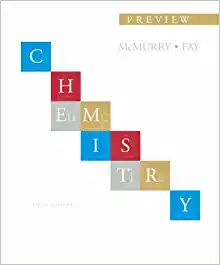Question
1- a) Draw the 5-monophosphate-2-deoxyguanosine nucleotide covalently bonded with neighboring DNA nucleotides. (b) Include hydrogens for the hydrogen bond donating groups of the base (c)
1- a) Draw the 5-monophosphate-2-deoxyguanosine nucleotide covalently bonded with neighboring DNA nucleotides. (b) Include hydrogens for the hydrogen bond donating groups of the base (c) Add lonepair electrons for hydrogen bond accepting groups of the base (d) How many H-bonds can the base make with any partner? (e) How many VDW contacts can the base make with any partner? Hint: Each atom can make a good VDW contact. (f) Compare these numbers for H-bonds and VDW and multiply by typical energy values (kJ/mol) for each interaction. Which has more potential to form stabilizing molecular interactions? Express your answer as a hand-drawn bar graph with Energy along the Y-axis.
2- (a) Draw chemical structure of Serine, Valine and Aspartate joined by peptide bonds and also connected to neighboring residues as found in a protein. (b) Include all charges as expected at physiological pH (pH = 7.5) (c) Rank these three amino acid residues by hydrophobicity (d) Rank these three amino acid residues by pKa (e) Rank these three amino acid residues by nucleophilicity
3- (a) Count the number of freely rotating bonds in your molecular sketches for Question 1 and Question 2. Include bonds connecting the residue/nucleotide to its neighbors. How many did you find for the nucleotide, and for the amino acid residue? (b) Calculate the Entropy for single stranded DNA with 5 nucleotides. Explain your reasoning for the total number of conformational isomers. Assume each freely rotating bond can take on 3 different torsion angle values. Conformational entropy is calculated as S = R ln(N) where R is the gas law constant and N is the number of isoenergetic conformations. Find a value for R with units of kJ /(K mol). (c) Convert Entropy into Gibbs free energy in units of kJ /mol by multiplying by a temperature compatible with life (as we know it). (d) Repeat the Entropy and Gibbs free energy calculation for a polypeptide with 5 amino acid residues. (e) From the viewpoint of conformational entropy, which pays a higher entropic cost, DNA annealing to form double stranded DNA or protein folding into its native folded structure? Assume N = 1 for dsDNA and native folded structure (f) Briefly, why do you think evolution arrived at the current solution with proteins constructed with peptide bonds and DNA constructed with freely rotating phosphoester bonds? Hint: think about the importance of reversibility for life.
Step by Step Solution
There are 3 Steps involved in it
Step: 1

Get Instant Access to Expert-Tailored Solutions
See step-by-step solutions with expert insights and AI powered tools for academic success
Step: 2

Step: 3

Ace Your Homework with AI
Get the answers you need in no time with our AI-driven, step-by-step assistance
Get Started


